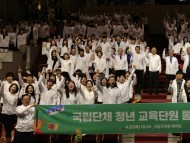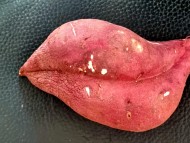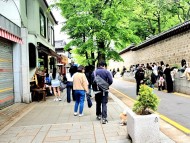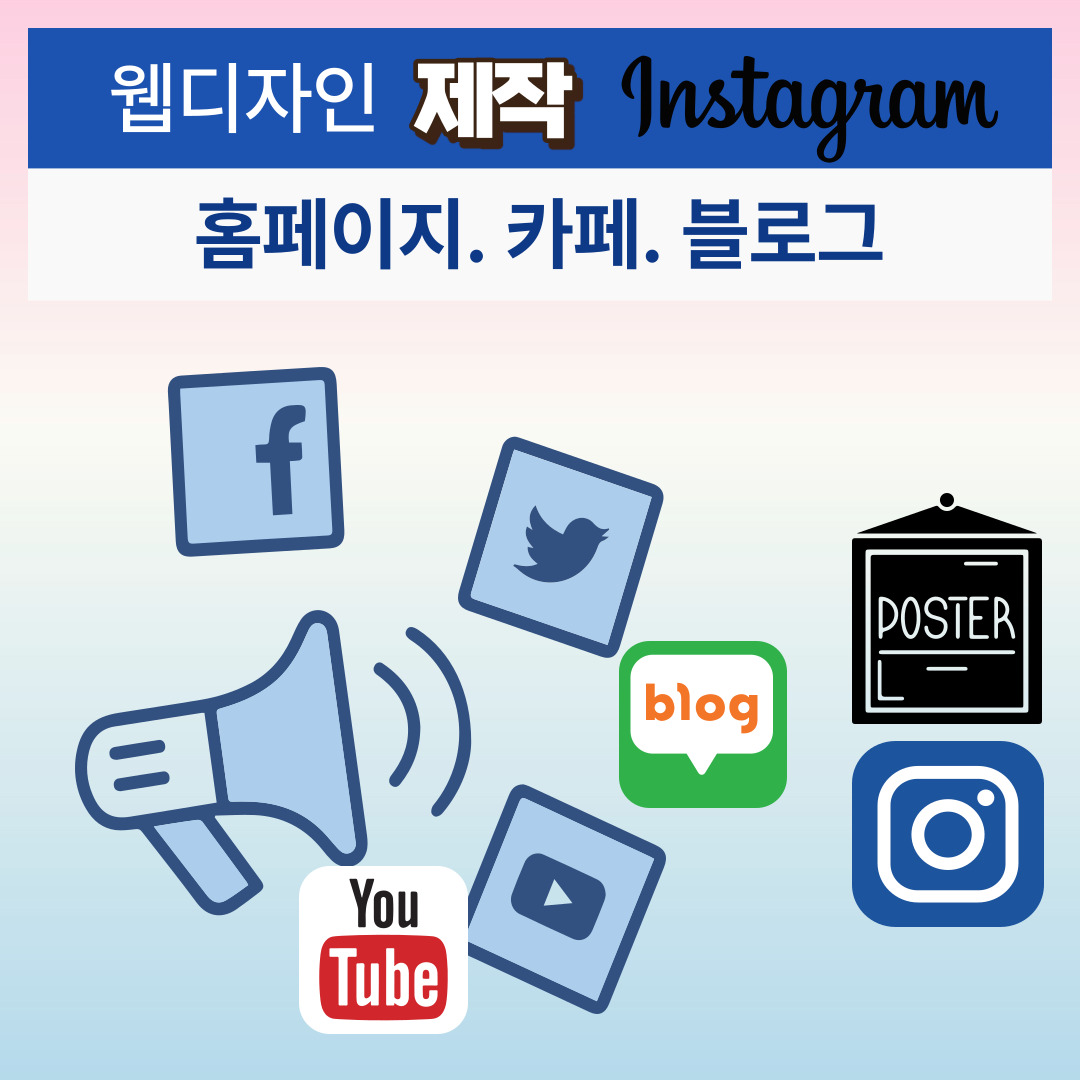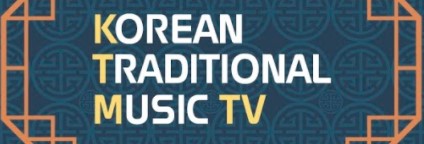2024.05.03 (금)
National Palace Museum of Korea Presents the Special Exhibition Hyeonpan: Hanging Boards Inscribing the Ideals of Joseon
- More Than Eighty Royal Hanging Boards from the Joseon Dynasty Including “Hanging Board from Daeanmun Gate” to Be Showcased from May 19 through August 15-
- Michael Lammbra…
- 등록 2022.05.18 19:41
- 조회수 1,187
From May 18 to August 15, the National Palace Museum of Korea (Director: Kim In Kyu), an affiliate of the Cultural Heritage Administration of Korea, is presenting a special exhibition entitled Hyeonpan: Hanging Boards Inscribing the Ideals of Joseon in its Special Exhibition Gallery. The exhibition presents some one hundred items, including eighty-one royal hanging boards that were inscribed in 2018 on UNESCO’s Memory of the World Register for Asia and the Pacific and related relics such as the nationally designated treasure Gisa gyecheop* and tools for gakjajang.*
*Gisa gyecheop: A painting album made in 1719 (the 45th year of the reign of King Sukjong) in commemoration of King Sukjong’s entry into the Giroso (the Office of Elders).
*Gakjajang: Master artisans who engraved letters or images on wooden boards and otherwise carried out the production of hanging boards.
The exhibition is comprised of five sections ? Prologue: Royal Hanging Boards Brought Down to Us; Part I: Making Hanging Boards; Part II: Embodying Ideals; Part III: Hanging Boards; and Epilogue: Hanging Boards Becoming Part of Life by Transcending Time. The exhibition is particularly meaningful in that it brings together and showcases the royal hanging boards housed in the storage of the National Palace Museum of Korea.
The introduction area, "Royal Hanging Boards Brought Down to Us,” presents a video highlighting the history of the Joseon-era royal hanging boards. It covers the time from the damage that they suffered during the period of Japanese occupation until their becoming part of the collection of National Palace Museum of Korea, reminding us of the importance of safeguarding and preserving cultural heritage. The Hanging Board from Daeanmun (Gate of Great Comfort) that had been hung on the main gate of Gyeongungung Palace (present-day Deoksugung Palace), which was a symbolic site in modern Korean history, offers visitors an understanding of the wishes of the people at the time who desired to be ‘greatly comforted’ under turbulent circumstances. This is the largest hanging board (124×374 cm) in the National Palace Museum of Korea collection.
The first section, "Making Hanging Boards,” presents the calligraphic styles, materials, and production techniques of hanging boards and sheds light on the artisans sustaining the tradition of the production of hanging boards. Hanging boards were made by artisans with specialties including calligraphic engraving and ornamental painting. The traditional production methods are presented in a video. Also introduced in this section is calligraphy on hanging boards based on models created by diverse figures ranging from kings, renowned calligraphers, and even eunuchs. Among them, Hanging Board with a Record on a Shrine to Patriotic Heroes (produced in 1582)* was written by the noted calligrapher Han Ho (1543?1605) and is the oldest example in the museum’s collection.
*Hanging Board with a Record on a Shrine to Patriotic Heroes: A hanging board inscribed with the history of Uiyeolsa, a shrine dedicated to loyal subjects during the reign of King Uija of the Baekje Kingdom and of King Gongmin of the Goryeo Dynasty.
The second section, "Embodying Ideals,” contains four themes that highlight hanging boards displaying the ideology of governance by virtue. The subsection "Hanging Boards that Reflect the Duties of a Sage Ruler” presents examples displaying the striving of kings and crown princes toward becoming a sage ruler through learning; "Hanging Boards that Reflect a King’s Affection for His People” presents examples of efforts to stabilize the lives of the people and educate them on morality; "Hanging Boards that Reflect the Ties between a King and His Subjects” presents examples of kings’ efforts to achieve a balance between sovereign power and the autonomy of subjects; and "Hanging Boards that Reflect Filial Piety” presents examples of respect for and honoring parents and ancestors as part of the practice of filial piety.
The third section, "Hanging Boards,” contains an impressive display that brings together royal hanging boards with diverse functions on a single wall. Hanging boards sometimes functioned as a sort of bulletin board or official document, for example those featuring a king’s orders and guidelines for his subjects, the assigned duties and rules for government offices, lists of officials and their tasks, and dates of national events. Those with a king’s personal feelings or experiences served as a window through which the king could reveal his thoughts and feelings to the public. These hanging boards demonstrate how the Joseon royal court attempted to regularly communicate with the people.
The final part of the exhibition, "Hanging Boards Becoming Part of Life by Transcending Time,” uses photographs and videos to explore the hanging boards that we find around us today and the people working to safeguard them and preserve their value. This section demonstrates that the demand for communication in the past was not so different from that of the present even though times and circumstances have changed significantly.
The exhibition offers diverse media content to enhance the understanding of hanging boards. An animated video of a scene of King Jeongjo distributing rice to the people in front Honghwamun Gate (the main gate of Changgyeonggung Palace) was produced based on written records of the scene (Honghwamun samido) from the Royal Protocol of King Jeongjo’s Visit to His Father’s Tomb in the Eulmyo Year. It is presented to help visitors better understand the meaning of honghwa.* Also on view is a video that helps visitors to understand the names of various hanging boards.
*Honghwa: Inspiring the people through the exercise of virtue
There is also a participatory space in which visitors can try their hands at writing hanging boards using digital technology. The hanging boards they design will appear on a large wall featuring an image based on Eastern Palaces, a painting depicting the layout of Changdeokgung and Changgyeonggung Palaces. Moreover, videos including a curator-guided tour of the exhibition and interviews with master artisans will be available on YouTube. Virtual reality (VR) components presenting panoramic views of the gallery will also be unveiled. Four products (a phone strap, keychain, cardholder necklace, and badge) produced in collaboration with the Korea Cultural Heritage Foundation (Chairperson: Choi Young-chang) will be available for purchase.
*Cultural Heritage Administration YouTube: https://www.youtube.com/chluvu
*National Palace Museum of Korea YouTube: https://www.youtube.com/gogungmuseum
*Korea Cultural Heritage Foundation website for purchase of goods: https://khmall.or.kr/
The National Palace Museum of Korea hopes that this exhibition will serve as an opportunity for visitors to better understand how the Joseon royal court and the ruling class embedded their wishes for harmonious governance and the prosperity of the nation on hanging boards and to think about their own desires for their personal spaces.
- [] 제6회 울진금강송 전국국악경연대회(06/08)
- [] 제29회 대통령상 한밭국악전국대회(07/06-07) (무용/기악/성악)
- [] 제8회 목담 최승희 전국국악경연대회(06/01) (판소리,기악)
- [] [서울]제28회 전국판소리경연대회(06/15-16)
- [] 제32회 대전전국국악경연대회(06/01-02)
- [] 제16회 순천 낙안읍성 전국가야금병창경연대회(05/25-26)
- [] 제18회증평국악경연대회(05/11)
- [] [군산]제32회 전국청소년민속예술경연대회(05/18)
- [] 제42회 전주대사습놀이 학생전국대회(5/18∼6/2)
- [] 제50회 전주대사습놀이 전국대회(5/18~6/3)
- [] 제20회 전국대금경연대회(06/08-09)
- [] 제4회 함양 전국국악경연대회(05/12)
- [] 제18회 대한민국 전통예술무용·연희대제전(06/09)<br>무용(전통무용…
- [] 제48회 부산동래 전국전통예술경연대회(06/15-16)(무용.기악)
- [] [부여]제1회충남전국청소년국악경연대회(05/04)(판소리.기악.타악)
- [] [광주]제21회 대한민국 가야금병창대제전(06/16)
- [] 제18회 과천전국경기소리경창대회(05/04)
- [] 제11회 곡성 통일전국종합예술대전(06/15-16)(판소리.무용, 기악,…
- [] 제24회 인천국악대제전 전국국악경연대회(05/25-26)
- [] 제26회 창원야철전국국악대전(07/06- 07)
- [] 2024 무안장애인 승달국악대제전(06/01-02)
- [] 제22회 무안전국승달국악대제전(06/01-02)
- [] 제10회 전국공주아리랑민요경창대회(05/26)
- [] 제17회 상주전국국악경연대회(05/19)(성악/무용·연희/기악)
- [] 제10회 전국밀양아리랑경창대회(05/26)
- [] 제21회 강남전국국악경연대회(05/22)(무용/타악/판소리/민요)
- [] 제26회 서편제보성소리축제 전국판소리 고수 경연대회(05/04-05)
- [] [순천]제10회 낙안읍성 전국 국악대전(04/27-28)
- [] 제29회 안산전국청소년국악경연대회(05/26)
- [] 제26회(통합58회) 여수진남전국국악경연대회(05/18-19)
- [] 제51회 대한민국 춘향국악대전 경연대회(05/05)(05/11-12)
- [] 제33회 고령전국우륵가야금경연대회(04/26-27)
- [] [부평]제8회 전국 청소년국악경연대회(05/11)(관악/현악/성악)
- [] 제22회 구례전국가야금경연대회(05/04-05)
- [완도]제24회 장보고국악대전 전국경연대회(05/05-06)(무용/판소리…
- [] 제23회 대한민국 빛고을 기악대제전(05/25-26)
- [] [인천] 제10회 계양산국악제(04/26-27) (풍물,사물, 기악,민요…
-

[수요연재] 한글서예로 읽는 우리음악 사설(191)<br>원주아리랑
원주아리랑을 쓰다. 한얼이종선 (2024, 한지에 먹, 40× 63cm) 아침에 만나면 오라버니요 밤중에 만나면 정든 님 일세...
-

[금요연재] 도자의 여로 (143) <BR> 백자철화편병편과 수물(受物)편
같은 백자가마터 출토품이라는 것도 이규진(편고재 주인) 편병은 병을 만든 후 앞과 뒤를 누르거나 두드려 면을 만든 그릇이다. 조선 전기부터 후기까지 지속적으로 만든 기...
-

[국악신문] 정창관의 ‘국악-신반’ <21>
윤하림 해금풍류 II 산조 윤하림 해금풍류 II 산조. (2024년 Sound Press 음반번호없음) 2023년 윤하림 ...
-

[국악신문 소장자료] (42)아리랑 최초 취입 아리랑, ‘1913년 京城卵卵打令’
일본 니포노폰 취입 조선민요 ‘경성란란타령’, 1913년 Nipponophone 6170 SP음반.(국악신문 소장자료) ...
-

[Pick리뷰] 경성 모던걸들의 춤판 '모던정동'…"자유 갈망하는 모습 담아"
30일 서울 중구 국립정동극장에서 열린 국립정동극장예술단 정기공연 '모던정동' 프레스콜에서 출연진이 주요 장면을 시연하고 있다. 2024.4.30 ...
-

세실풍류, 박병천의 '구음시나위'에 허튼춤 선사한 안덕기
국립정동극장이 4월 한달간 진행하는 '세실풍류 : 법고창신, 근현대춤 100년의 여정'에서 23일 박병천의 '구음시나위'에 허튼춤 추는 안덕기 (사진=국립정...
-

세실풍류, 동해별신굿 민속춤사위를 제해석한 조재혁의 '현~'
국립정동극장이 4월 한달간 진행하는 '세실풍류 : 법고창신, 근현대춤 100년의 여정' 에서 조재혁의 '현~' 공연 모습. (사진=국립정동극장). 2024....
-

[Pick리뷰] 이호연의 경기소리 숨, ‘절창 정선아리랑!’
# ‘이호연의 경기소리 숨’ 공연이 지난 4월 26일 삼성동 민속극장 ‘풍류’에서 열렸다. 20대에서 60대까지의 제자들 20명과 5명의 반주자와 함께 경기잡가, 경기민요, 강원도...
-

[PICK인터뷰] 미리 만나 보는 '제94회 남원춘향대전'
[국악신문 정수현 전문기자]=대한민국에서 가장 오래된 축제로 손꼽히는 남원춘향대전(남원춘향제)이 오는 5월 10일(금)부터 5월 16일(목)까지 7일간 남원시 광한루원 일대에서 열...
-

[Pick리뷰] 모던연희극 ‘新칠우쟁론기’
4월 18일부터 20일, 남산국악당에서 아트플랫폼 동화의 모던연희극 ‘新칠우쟁론기’가 펼쳐졌다. [국악신문 정수현 전문기자]=지...
-

[PICK인터뷰] 국립국악관현악단의 채치성 예술감독을 만나다
[국악신문 정수현 전문기자]=봄비가 촉촉이 땅을 적시는 4월, 국립국악관현악단 예술감독으로 취임한 지 6개월이 된 채치성 예술감독님을 만났다. 그는 국악방송 사장, KBS 국악관현...
-

[Pick리뷰] 이 시대의 새로운 춘향가- ‘틂:Lost&Found’
2024 쿼드초이스_틂 (사진=서울문화재단 대학로극장 쿼드 나승열) [국악신문 정수현 전문기자]=대학로극장 쿼드의 ‘쿼드초이스’...
-

[Pick리뷰] 세 악단의 조화로운 하모니, ‘하나 되어’
지난 4일, 국립국악원은 국립국악원 창작악단, KBS국악관현악단, 전북특별자치도립국악원 관현악단 118명으로 구성된 연합 관현악단 무대 ‘하나되어’를 국...
-

[인터뷰] 김경혜의 '시간의 얼굴' 작품전, 16일 개막
칠순을 넘어서는 길목에서 중견작가 김경혜(영남이공대 명예교수) 작가의 열번째 작품전이 오는 16일부터 25일까지 10일간 대구시 중구 슈바빙 갤러리에서 열린다.전시되는총 50여 개...


